Britain is home to thousands of castles, from the powerful Norman stone keeps that first brought castles to the British Isles, to the concentric castles that represented the most formidable defensive fortifications of the medieval period.
Today many of these incredible structures survive, while still more lie in various states of ruin and disrepair. Below is a list of some of the most famous, fascinating, and blood-soaked castles in Britain.
Best Castles to Visit in the UK
Windsor Castle
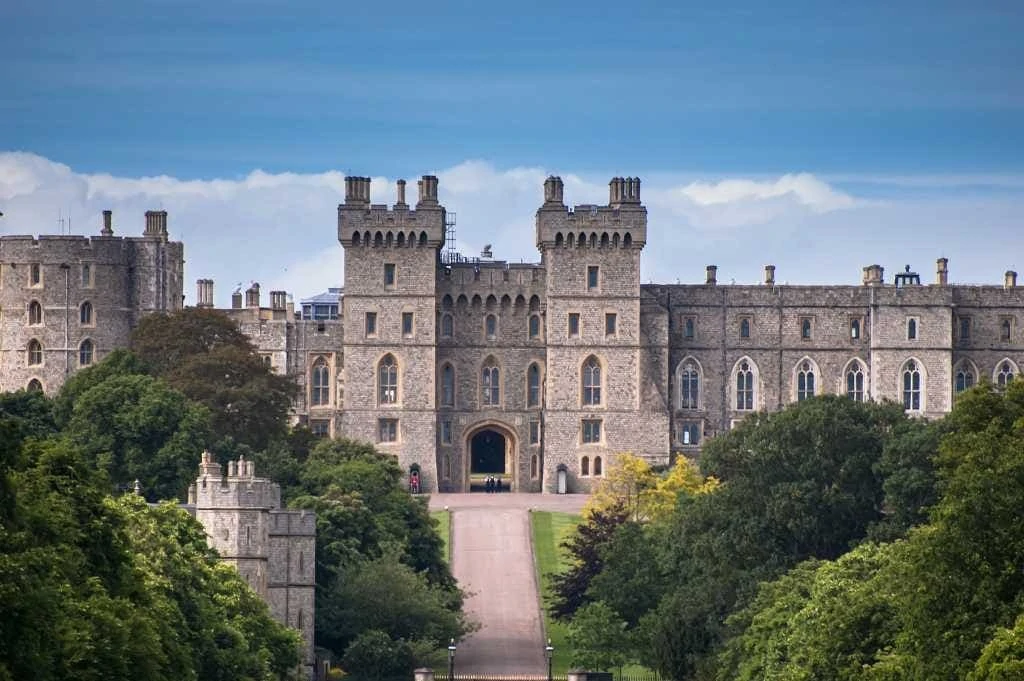
Built by William the Conqueror following his invasion of England in 1066, Windsor was an important strategic site as it was close to both the river Thames, one of the primary medieval routes into London, and Windsor Forest, a royal hunting forest since Saxon times.
Initially the castle was a simple wooden keep on top of a man-made earthwork motte, with a small bailey. Before 1100 two more baileys were added, giving Windsor its distinctive double-bailey layout which it still has to this day.
Gradually the wooden keep and bailey walls of the castle were replaced with stone structures, and during the reign of Henry III (1216-1272) an elaborate royal palace was built within the castle walls.
The palace was rebuilt in an even grander style by Edward III and Windsor hosted the royal court, as well as diplomatic receptions, many times during the Tudor period. By the 18th century the castle was in need of repairs and was renovated by George III and George VI.
Alnwick Castle

Alnwick is a Norman castle constructed at the end of the 11th century. Situated just south of the river Aln and separated from the town of Alnwick by a ravine, the castle was one of the earliest in England to be built without a keep – instead, the fortification is based around two circuits of walls and buildings.
The inner circuit is set around a small courtyard and features the main residential elements of the castle, all set within a larger circuit of walls and buildings which forms a bailey. Thanks to its position close to the Scottish border, Alnwick was besieged several times.
The castle was captured by King David I of Scotland in 1136, and in 1172 and 1174 Alnwick was besieged again by King William the Lion, who was then captured during the 1174 battle of Alnwick before the walls of the castle.
Bamburgh Castle
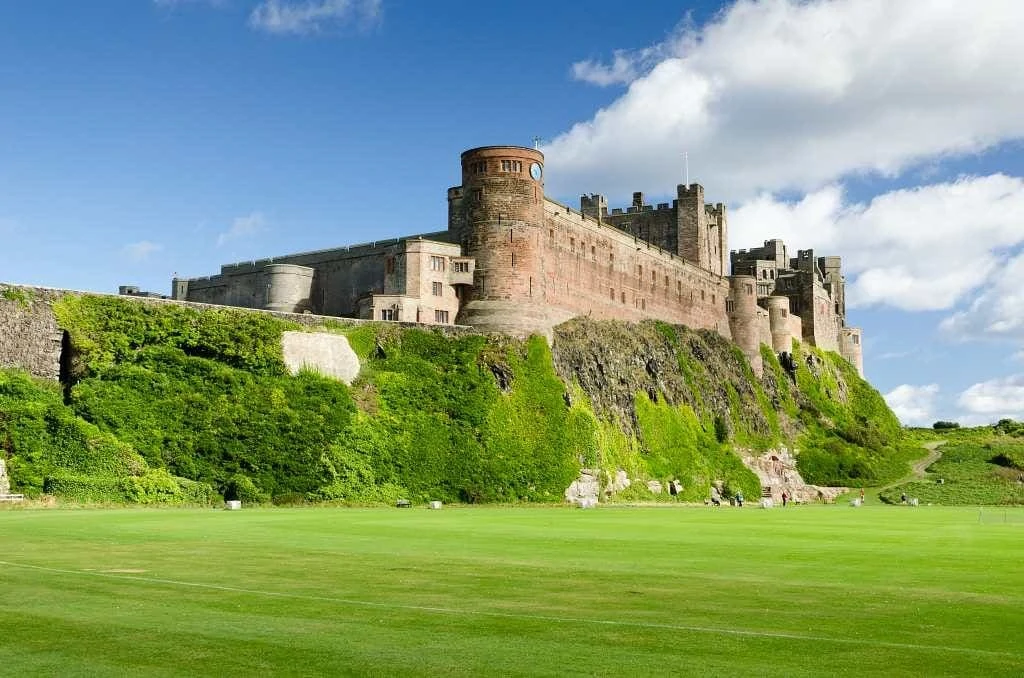
Originally the site of the Celtic Brittonic fort of Din Guarie, which may have been the capital of the Anglo-Saxon kingdom of Bernicia, Bamburgh later became a Saxon fort until it was destroyed by the Vikings in 993.
The castle is built on a rocky outcrop on the north-eastern coast of England, not far from the isle of Lindisfarne. The Normans constructed a castle at Bamburgh, as part of their efforts to subdue and control England following the conquest of 1066, which forms the core of the defenses which stand on the site today.
The Norman keep can still be seen at the center of the fortification, to which a large curtain wall circuit was added which extends to the north and south of the original keep, covering the top of the rocky outcrop on which Bamburgh is situated.
Warwick Castle
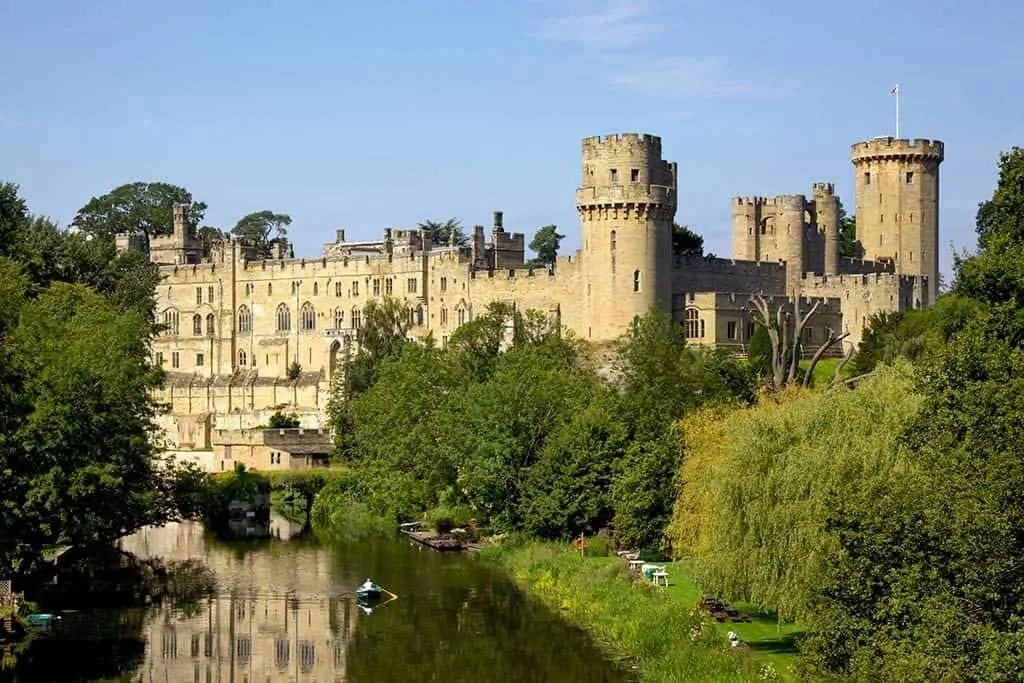
Starting life in 1068 as another of William the Conqueror’s motte-and-bailey castles, Warwick was later rebuilt in stone during the 12th century in the form of a shell keep.
Improvements were added in the 14th century, including a gatehouse and barbican complete with murder holes and machicolations – several towers were also built, and the walls were strengthened to make Warwick an incredibly formidable fortress.
During the English Civil War, the castle was held by Parliamentarian forces and was besieged unsuccessfully by Royalists in 1642. The cannon of the Royalists had little effect on the walls, and the speedy arrival of a relief force quickly ended the siege.
Warwick castle is one of Britain’s most popular tourist sites, thanks in part to the fact that it is home to one of the world’s largest working siege engines.
An enormous 22-ton counterweight trebuchet sits on the riverbank below the castle and is capable of throwing 150-kilogram projectiles up to 300 meters.
The Tower of London
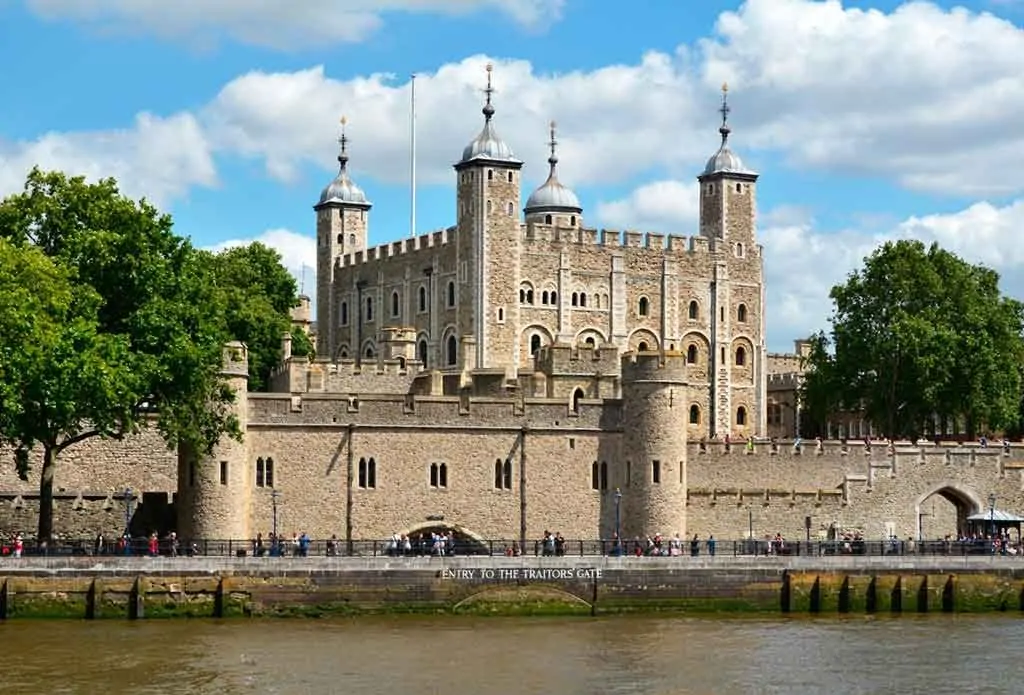
Built on 12 acres of ground on the north bank of the River Thames in London, the Tower of London was founded by William the Conqueror in 1078 as a motte-and-bailey fortification designed to overlook his new capital.
Based around a Norman keep known as the White Tower, the castle is formed of a series of buildings set within the circuit of two concentric curtain walls and an outer moat.
The tower was upgraded during the 12th and 13th centuries and despite later additions, the layout that survives today is the one that was established at the end of the 13th century. Since its construction, the castle has been used as a prison used to hold several high-profile prisoners such as Sir Walter Raleigh.
However, it has also served many other purposes and has also been utilized as an armory, a treasury, public record office, a royal mint, and home of the Crown Jewels of England.
The castle is also synonymous with executions – over a 400-year period, 112 executions were carried out on Tower Hill just to the north of the Tower of London.
Bodiam Castle
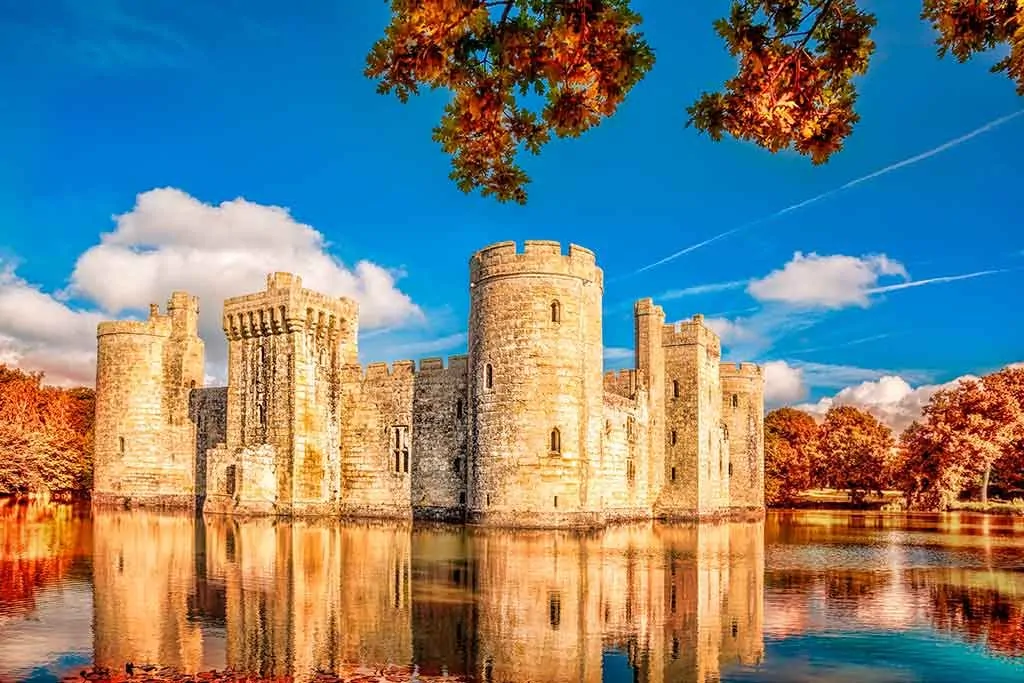
Built in 1385 with permission from Richard II, Bodiam castle is a picturesque ruin today. In terms of its design, Bodiam has no central keep and is instead made up of curtain walls punctuated with towers in a quadrangular plan.
It is also notable for its water defenses – it is built on a square artificial lake with only a single narrow bridge leading to the castle entrance, making it very difficult to attack.
Never tested in battle, Bodiam was surrendered to Richard III during the Wars of the Roses and sold during the English Civil War by its owner Lord Thanet to pay for fines. The castle was subsequently uninhabited and allowed to remain as a ruin, before being restored in the 19th century.
Norwich Castle
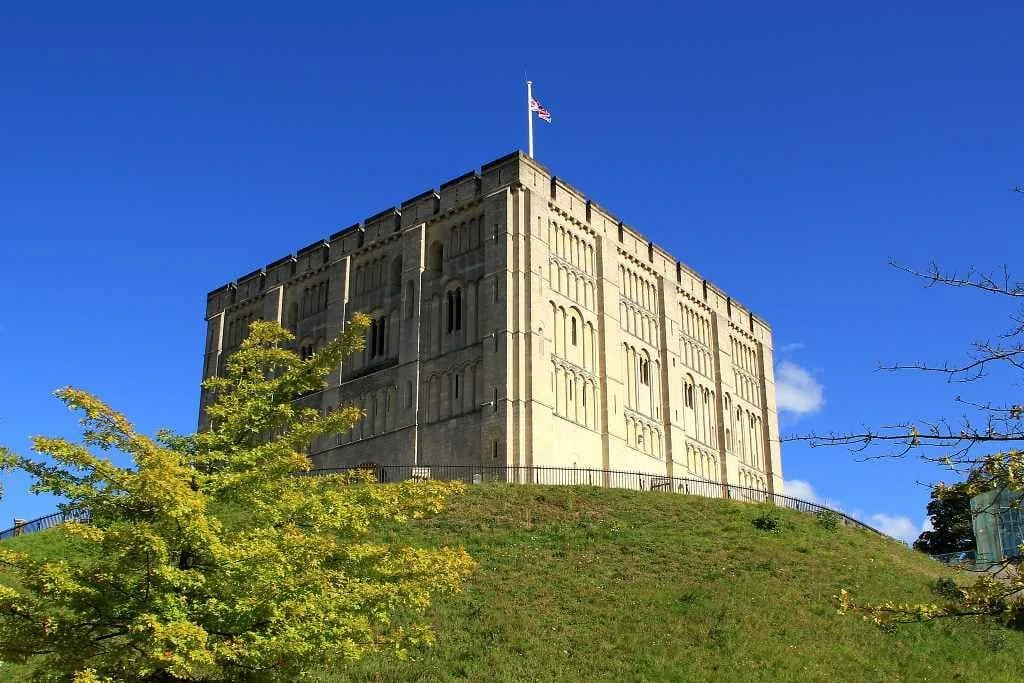
Likely founded in 1067 during William the Conqueror’s campaigns in East Anglia, Norwich castle started out as a wooden motte-and-bailey but was quickly upgraded to stone around the end of the 11th century.
The keep itself was built in classic Norman style – it is a strong square structure with narrow windows, semi-circular rounded arches, and buttressed exterior walls that are characteristic of Romanesque architecture, a style that emerged in Normandy and became popular across northern Europe in the 11th and 12th centuries.
The castle also has crenelated battlements and ornate blind arcading along its walls, suggesting that the fortification was intended to act as a statement of Norman’s wealth and power, rather than serving a purely military purpose.
Norwich castle does not have an exterior curtain wall. Instead, it stands atop an enormous man-made motte – dozens of Saxon houses were demolished to make way for this earthwork.
Edinburgh Castle

Built on Castle Rock, a volcanic ‘plug’ or crag in the center of Edinburgh which has been inhabited since the Iron Age, Edinburgh castle commands the skyline of the Scottish capital.
The earliest records state that there was a fortification on the hill since the reign of King Malcolm III in the 11th century, and there was certainly a royal castle there by the time of David I in the 12th century. The castle remained as a royal residence until the 17th century when it came to be used as a military barracks.
Throughout its long history, Edinburgh castle was attacked numerous times and was involved in many historical including the Wars of Scottish Independence and the Jacobite uprising of 1745. The castle can lay claim to being ‘the most besieged place in Great Britain’ owing to the fact that it has been attacked 26 separate times.
Stirling Castle

Stirling Castle sits atop a rocky crag surrounded on three sides by sheer cliffs, making the fortification extremely difficult to attack. The castle held a strategic position protecting the furthest downstream crossing of the River Forth.
Stirling was a royal center by the year 1110 and continued to be used as a residence of Scottish monarchs throughout the medieval period until the union of the English and Scottish crowns in 1603 – Mary Queen of Scots was even crowned at Stirling castle.
Most of the castle that remains today dates from the 15th and 16th centuries, although some earlier elements are still present. The castle was involved in eight sieges, including one in 1304 by Edward I of England.
Stirling was the last stronghold of resistance to English rule in Scotland and was subjected to a four-month siege during which Edward I deployed ‘Warwolf’, the largest trebuchet ever constructed.
Urquhart Castle
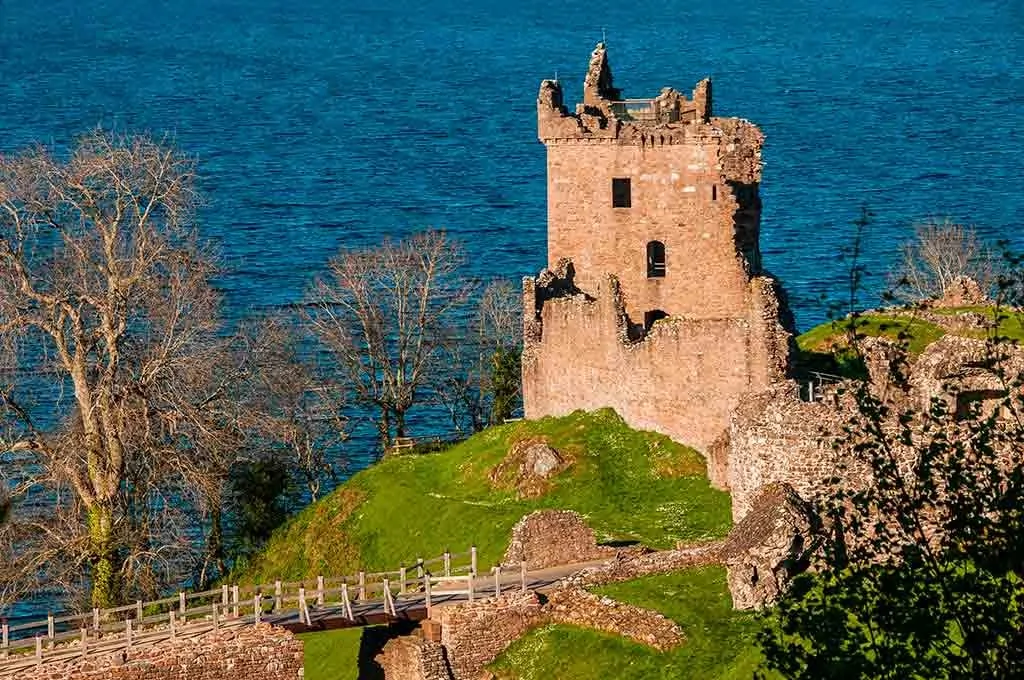
Situated on the banks of Loch Ness in the highlands of Scotland, Urquhart Castle is a ruin that dates from the 13th to the 16th centuries. Although it had been the site of earlier fortifications, it seems likely that the first incarnation of Urquhart castle is the motte and shell keep that appear to date from the mid-13th century.
Captured by Robert the Bruce in 1306 as part of the Scottish Wars of Independence, the castle became a royal possession and was instrumental in resisting raiding by the MacDonald Lords of the Isles (who ruled a semi-independent realm in western Scotland).
The castle was later partially destroyed in 1692 to prevent it from being used by Jacobite rebels and has remained ruined ever since. Based around two baileys on a headland projecting into Loch Ness, Urquhart remains a picturesque site and is very popular with visitors.
Caerlaverock Castle
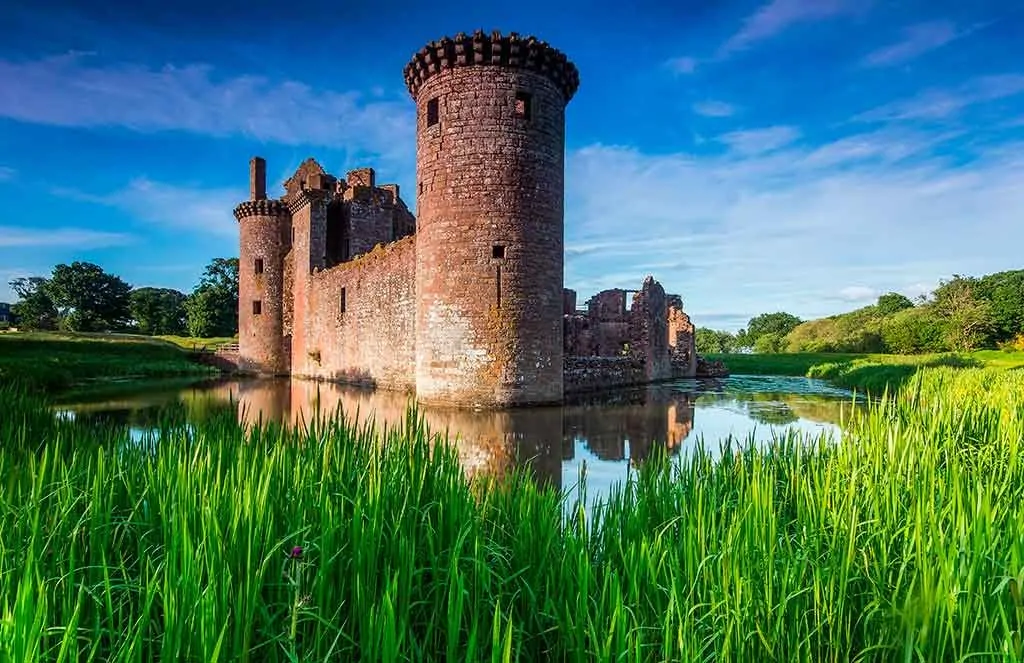
Built in the 13th century near Dumfries on the southern coast of Scotland, Caerlaverock has an interesting triangular plan. The castle consists of curtain walls arranged in a triangle, with thick round towers at each corner and a powerful double-towered gatehouse protecting the entrance to the fortification.
The castle also has a man-made moat making approach by besiegers very difficult – Caerlaverock can only be reached by a narrow bridge that spans the moat.
Inside the castle, residential buildings were built adjacent to the walls, arranged around a small courtyard. In 1300 the castle was besieged and taken from the Maxwell family by Edward I during the Wars of Scottish Independence.
Eventually, the Maxwells regained control of their seat of power until 1640 when protestant Covenanters attacked the Catholic Maxwells, taking the fortification after a 3-month-long siege. The castle was ruined during the siege, never to be re-inhabited.
Caernarfon Castle
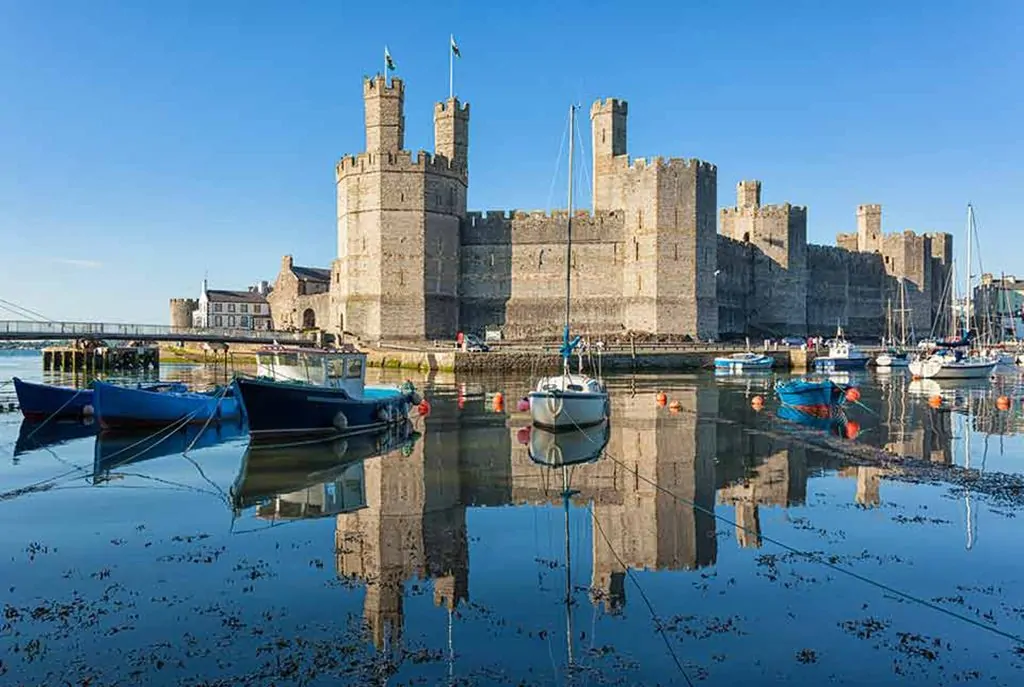
Originally an 11th-century motte-and-bailey castle, Caernarfon was rebuilt in stone by King Edward I of England from 1283-1300, as part of his efforts to dominate Wales and subdue its independent princes. The castle was besieged and sacked in 1294 by Madog ap Llywelyn during his rebellion against the English but was recaptured the following year.
During the Glyndŵr Rising (1400-1415), the last major rebellion in Wales, the castle was also besieged unsuccessfully. The castle itself consists of an enclosure made up of curtain walls, a gatehouse, and eight towers roughly in the shape of a figure of eight – inside the castle was divided into two baileys or ‘wards’.
The castle commands excellent views across the town of Caernarfon and the surrounding countryside, as well as the Menai Strait and the shores of the Isle of Anglesey to the north.
Beaumaris Castle
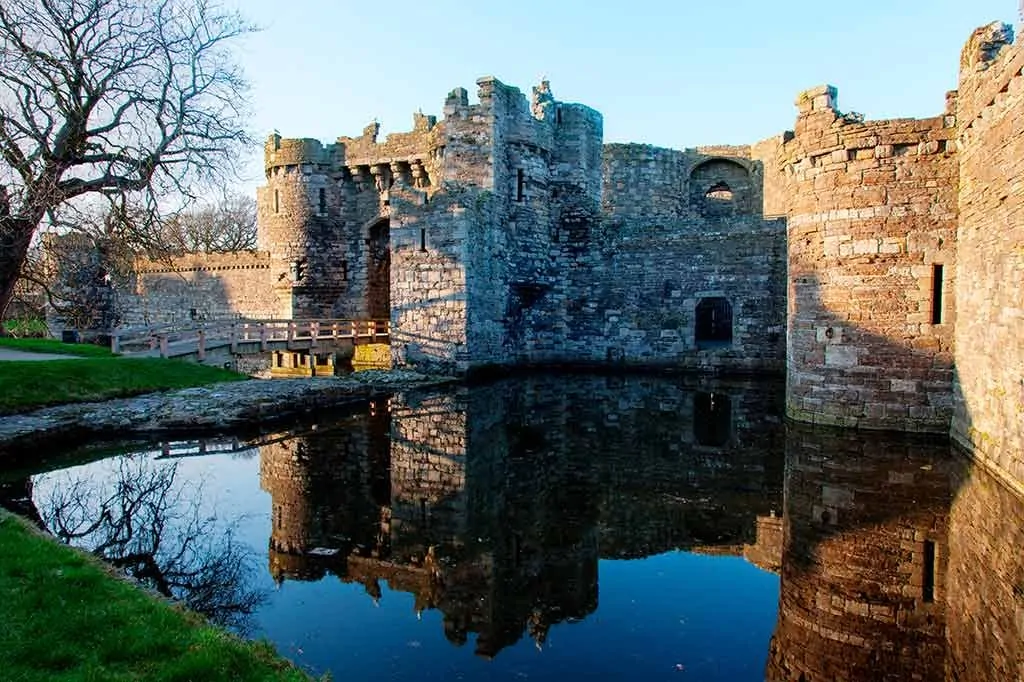
Beaumaris is another of Edward I’s Welsh castles, built during his campaigns to subjugate the country. The castle itself was only ever partially completed, but Beaumaris nevertheless represents an incredibly impressive example of concentric castle design.
With a moated outer bailey featuring a wall with twelve towers and two gatehouses, and an inner ward complete with two huge gatehouses and six massive towers, Beaumaris was an incredibly powerful castle meticulously designed to resist siege engines and assault from besieging forces.
The south gate of the castle could be reached by sea, allowing the garrison to be resupplied by boat even during a siege. Despite never having been finished, fighting over Beaumaris occurred during the rebellion of Owain Glyndŵr in 1403 and 1405, and during the English Civil War when it was surrendered to parliamentary forces in 1646.
Harlech Castle
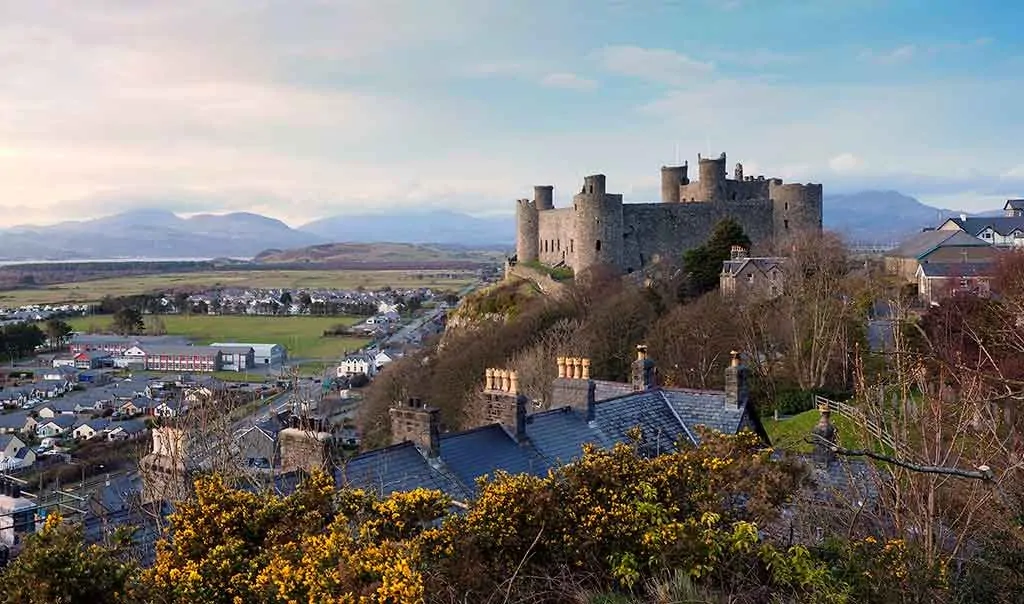
Another of Edward I’s Welsh fortresses, Harlech is a castle atop a rocky hill overlooking the Irish Sea on the western coast of Wales. Built between 1282 and 1289 Harlech is an excellent example of a completed concentric castle, considered the height of high medieval military architecture.
The wall of Harlech’s outer ward consisted of a relatively low, thin curtain wall, however, the inner ward is surrounded by a hugely thick wall arranged in a rectangular shape. There are large circular towers at the corners of the walls, as well as an enormous gatehouse flanked by two ‘D-shaped’ defensive towers.
Harlech resisted the siege of Madog ap Llywelyn from 1294-5 but fell to Owain Glyndŵr during his rebellion in 1404. The castle was also subject to a seven-year siege from 1461-8, the longest known siege in the history of the British Isles, during the Wars of the Roses. The siege is commemorated by the song Men of Harlech.
Old Sarum
The site of Old Sarum castle is very ancient and may have been inhabited as early as 3000 BC – the castle stands two miles north of modern Salisbury in the south west of England, close to the prehistoric monuments of Stonehenge and Avebury.
The castle of Old Sarum was initially the site of an Iron Age hill fort, built around 400 BC, before it was occupied by first the Romans and then the Saxons, who held it as a bastion of defense against Viking raids. Later the Normans constructed a stone motte-and-bailey castle at the top of Old Sarum hill.
A curtain wall was also built in a wide circuit beyond the castle, and this wider ‘bailey’ housed a settlement which included a grand cathedral and a palace built for Henry I. Old Sarum remained an important settlement until the 13th century.
Eilean Donan Castle
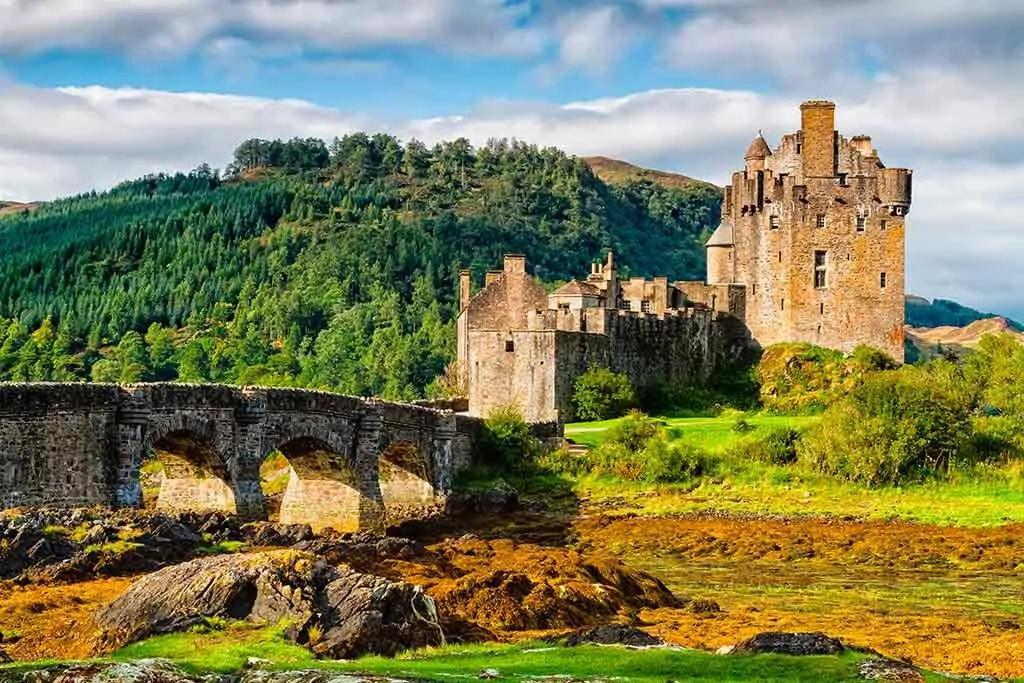
Built on a small island where Lochs Duich, Long, and Alsh meet in the western Scottish Highlands, Eilean Donan castle was a stronghold of Clan Mackenzie. Originally built in the 13th century, the castle was formed of a curtain wall that encircled most of the tidal island of Eilean Donan.
The fortification acted as a strategic stronghold that controlled local access to the highlands from the sea. It was during the Jacobite rebellion of 1715 that the castle was destroyed – in the spring of that year Eilean Donan had been taken by Spanish soldiers supporting the Jacobite cause.
Three ships of the British Royal Navy subjected the castle to an intense bombardment and successfully captured it following an assault. The castle was subsequently destroyed, before being restored from 1919-1932.
Ludlow Castle

Likely one of the first stone castles built in England, Ludlow is a Norman construction situated on a promontory over the River Teme, which flows along the England/Wales border.
Later fortified with a large outer bailey and a great tower in the 12th century, Ludlow was captured and recaptured by the rival factions during the civil war (known as the ‘Anarchy) of 1135-1153. The castle also acted as a base of Royalist power during the Second Baron’s War.
During the 15th century, Ludlow was chosen as the seat of power for the Council in the Marches of Wales, essentially making it the administrative capital of the country.
As a result, the castle was renovated and became quite luxurious – however, following its use as garrison quarters during the civil war, Ludlow fell into disrepair and is currently a ruin.
Carrickfergus Castle
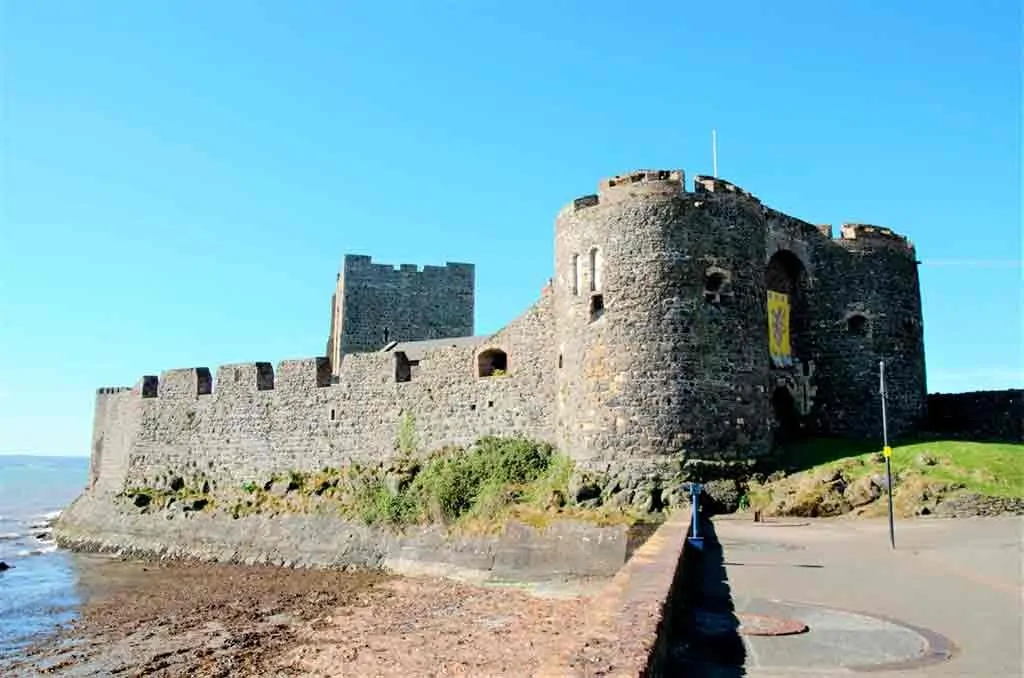
Built on the northern shore of Belfast Lough in Northern Ireland, Carrickfergus was a 12th century Norman fortification. With three-quarters of its perimeter surrounded by water, Carrickfergus was very difficult to assault and controlled access to Belfast from the sea.
Thanks to its position, the castle was an important fortification, fought over throughout its history. In 1210 King John of England took the castle for the crown, and Carrickfergus remained the primary royal administrative centre in Northern Ireland for many centuries.
During the 16th and 17th centuries, the castle was upgraded with gunports and embrasures to support artillery. It was taken by William of Orange’s marshal Schomberg in 1689, as well as in 1760 when French privateers raided the town of Carrickfergus and looted the castle as part of the Seven Years War.
Leeds Castle
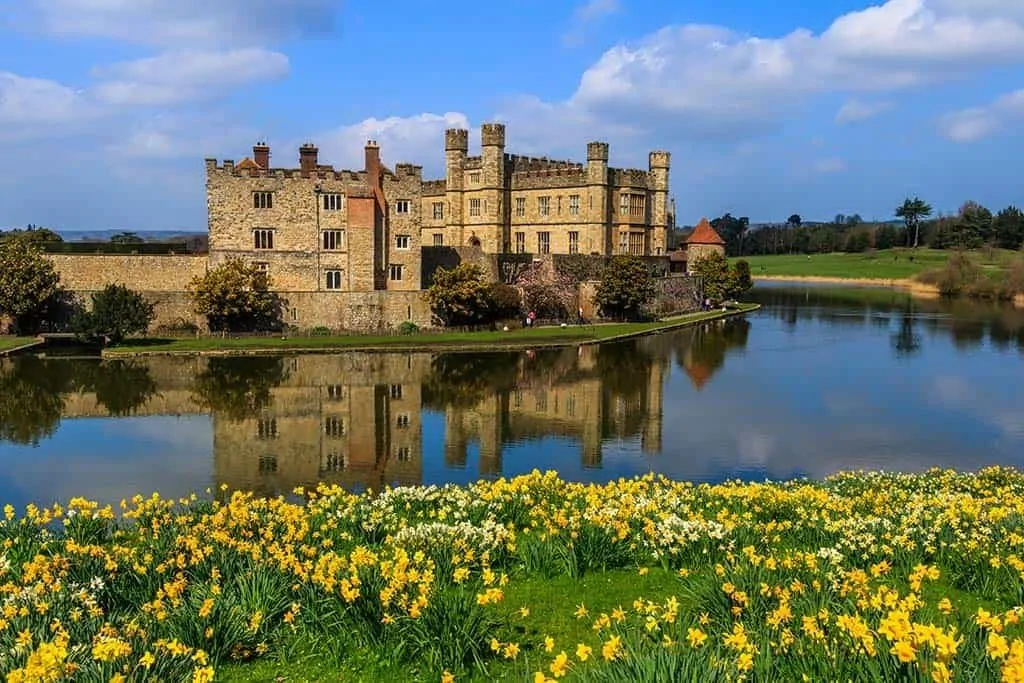
Leeds Castle, which was initially a simple stone fortification built by Norman lord Robert de Crevecoeur in 1119, is not actually situated near the city of Leeds as the name suggests – instead, it is built near the village of Leeds in Kent, on several islands in a lake formed by the River Len. It seems likely that the name ‘Leeds’ derived from the name of a Saxon lord Leed or Led who built an early fortification on the site.
In 1278 the castle was purchased by Eleanor of Castile, King Edward I’s wife, after which it was renovated extensively. Leeds became a favorite residence of Edward and was later used by Henry VIII as a residence for his wife Catherine of Aragon. During the early 19th century the castle was repaired and remodeled in the Tudor style.
Caerphilly Castle
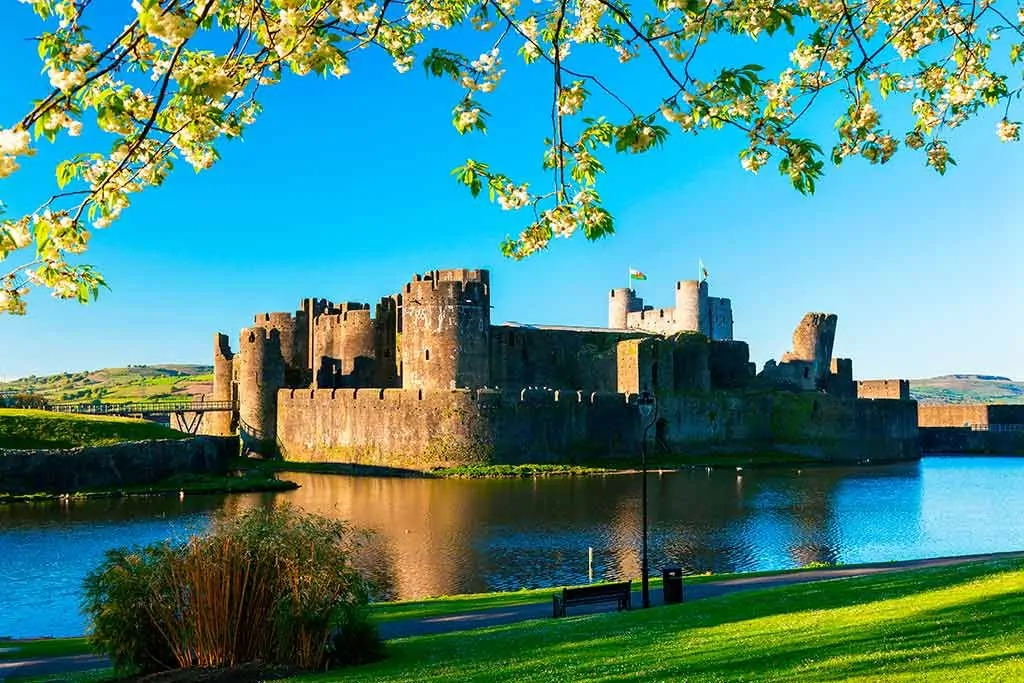
Built by English noble Gilbert de Clare in the mid-13th century, Caerphilly was the first concentric castle in Britain. Built on a 30-acre site (making it the second-largest castle in Britain), the castle is surrounded by a series of spectacular artificial lakes – the dams to these lakes were also fortified. Built as part of Gilbert’s attempts to control Glamorgan, the half-finished castle was burnt by Llywelyn ap Gruffudd in 1270.
Despite setbacks, Caerphilly was completed: it was an extremely powerful castle with its multiple lines of defense and large gatehouses. The castle likely inspired Edward I’s Welsh castles.
By the 16th century, Caerphilly had fallen into disrepair, until efforts were made in the 18th century to restore it. In the 1950s the site was gifted to the state and the lakes were once again filled with water.
